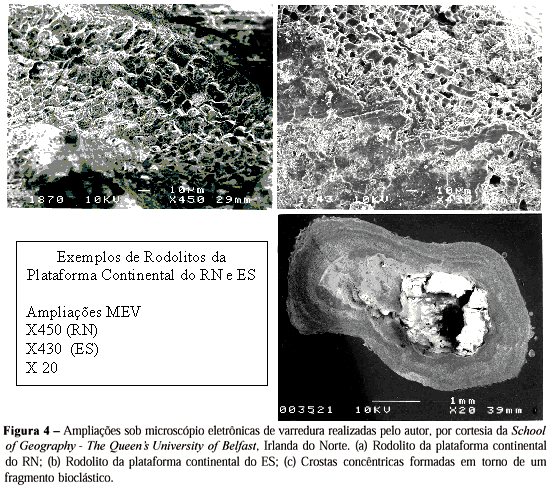Marine bioclasts in Brazil are mainly formed by calcareous algae (coralline algae). Maerl and Lithothamnium are industrial terms used in France. Only the free-living forms of calcareous algae, such as rodoliths, nodules and its erosional debris are exploited economically. They occur as unconsolidated sedimentary deposits, which are easily collected through dredging operations. The calcareous algae are formed by calcium carbonate and magnesium contenting more than 20 oligoelements, mainly Fe, Mn, B, Ni, Cu, Zn, Mo, Se and Sr. This material has several applications in industry: soil conditioner for agriculture, potabilization of water, cosmetics, food diets, bone implants, animal nutrition and treatment of water in lakes. Since the 60's researchers from the Universidade Federal de Pernambuco have reported the wide occurrence of coralline algae in the north-northeast continental shelf of Brazil. The economic potential of these occurrences is greater than in France. In fact, the extension of carbonatic sediments on the Brazilian continental shelf is the largest worldwide. They continuously cover large areas of the medium and outer continental shelf. Nevertheless, these deposits remain unexploited for industrial use. On the other hand, France with a relatively small continental shelf is the largest producer around the world in marine lithoclasts and bioclasts.
Marine bioclasts; Coralline algae; Brazilian continental shelf; Mineral resources




